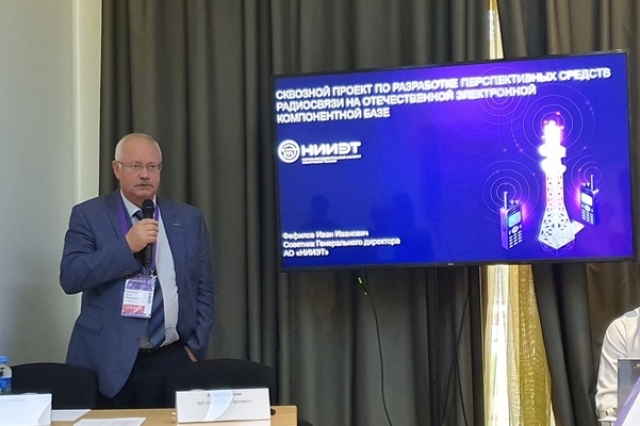At the heart of this method is the development of ECB in close cooperation with the development of equipment. This thesis became one of the key ones in the report presented by Ivan Fefilov, Advisor to the General Director of JSC NIIET, as part of the scientific conference of the VII Russian Forum "Microelectronics 2021".
In order for electronic components of Russian design centers to find application, first of all it is necessary that their technical characteristics meet the requirements of the equipment and the system as a whole. The easiest way to achieve this is when the hardware developer is directly involved in the creation of these components.
Thus, Ivan Fefilov gave a short answer to the question "How to force a hardware developer to use a domestic ECB?":
How to implement this in practice? The answer to this question was also given in the report: a methodology was proposed, the key element of which is a joint design center that unites radio-electronic and microelectronic design centers, factories and universities that form the ecosystem of the project.
The methodology was considered on the example of the "Communication" program, developed in 2018-2019. Although this program was aimed at creating military means of radio communication, the speaker stressed that the presented methodology is universal and can be used for the development of equipment for other purposes without significant changes.
As it was shown in the report, the Svyaz program fit into the overall structure of end-to-end projects, built from the end service and including all levels up to the ECB.
When forming and implementing such projects, it is necessary to take into account the limitations imposed by the existing realities - first of all, finite deadlines and resources. According to the speaker, it seems appropriate to develop only a key specialized ECB for the project, and universal products suitable in characteristics can be used as non-critical components.
In addition, projects should take into account the existing capabilities of manufacturing enterprises. In particular, at the constructive level, in conditions of lag in microelectronic technologies, the use of systems in the housing (ICS) is a promising solution for the implementation of the necessary and sufficient functionality.
Ivan Fefilov recalled the thesis that was voiced the day before, at the plenary session of the forum:
When such a component is needed for a specific project, especially if this project is of industrial or special application and, as a result, does not differ in large seriality, IcS come to the rescue, allowing combining basic universal systems on a chip and specialized, but at the same time simpler chips.

